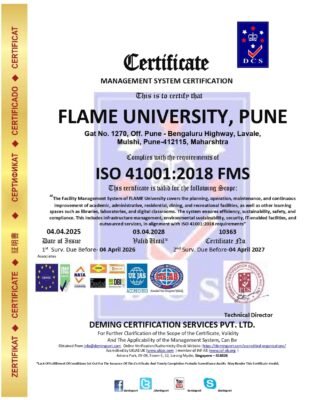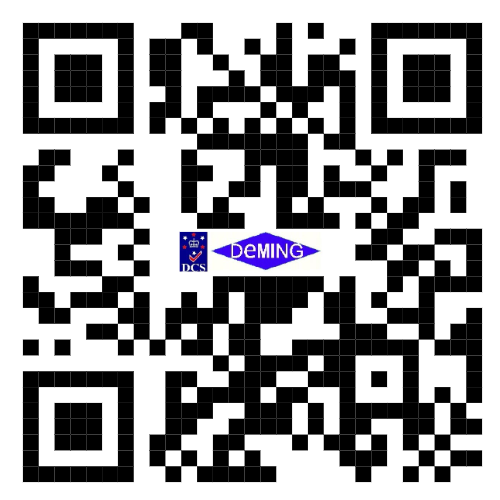Description
ISO 21001 Educational Organization Management Systems
What is ISO 21001?
ISO 21001 is an international standard that specifies requirements for a Management System for Educational Organizations (EOMS). It provides a framework for educational institutions to enhance the satisfaction of their learners and other beneficiaries by improving the educational processes and ensuring conformity to educational requirements.
In simple terms, it’s like the well-known ISO 9001 (Quality Management) but specifically tailored for the education sector.
Key Objectives and Purpose
The primary goal of ISO 21001 is to help educational organizations deliver effective education that meets the needs and expectations of all stakeholders. Its key purposes are:
-
Align Educational Services with Strategic Goals: Ensure that teaching, learning, and research activities support the institution’s mission and vision.
-
Enhance Learner Satisfaction: Focus on the learner’s experience and outcomes.
-
Promote Equity and Inclusiveness: Provide a framework for personalized learning and equal opportunities for all learners, including those with special needs.
-
Improve Consistency and Effectiveness: Standardize processes to improve the quality and reliability of educational delivery.
-
Foster a Culture of Continuous Improvement: Encourage ongoing evaluation and refinement of educational programs and support services.
-
Facilitate Credibility and Recognition: An internationally recognized certification demonstrates a commitment to high-quality education.
Who Can Use It?
ISO 21001 is applicable to any organization that provides educational products and services. This includes:
-
All Levels of Education: Pre-schools, primary & secondary schools, colleges, and universities.
-
Vocational and Professional Training Centers: Corporate training departments, trade schools.
-
Tutoring and E-Learning Services: Online education providers.
-
Non-Profit and Community Education Organizations.
-
Government and Public Educational Bodies.
Core Principles of ISO 21001
The standard is built on several fundamental principles, many of which are shared with ISO 9001 but contextualized for education:
-
Focus on Learners and Other Beneficiaries: The primary focus is on meeting the requirements of learners, but also considering parents, guardians, employers, and society.
-
Visionary Leadership: Commitment from top management is crucial for establishing a unified purpose and direction.
-
Engagement of People: The competence and involvement of all staff (teachers, administrators, support) are essential.
-
Process Approach: Managing activities as processes leads to more efficient and consistent results.
-
Improvement: Continuous improvement is a permanent objective of the organization.
-
Evidence-Based Decision Making: Decisions should be based on the analysis and evaluation of data.
-
Relationship Management: Managing relationships with partners, suppliers, and the community is key for sustained success.
-
Social Responsibility: A specific principle for education, emphasizing accessibility, equity, and ethical behavior.
-
Accessibility and Equity: Ensuring fair and inclusive education for all.
The High-Level Structure (HLS) – Key Clauses
ISO 21001 follows the same common structure as other ISO management system standards (Annex SL), making it easier to integrate with existing systems like ISO 9001 or ISO 14001.
The main clauses are:
-
Clause 4: Context of the Organization: Understand the institution’s internal and external issues, stakeholders, and their needs.
-
Clause 5: Leadership: Top management must demonstrate leadership and commitment, establish a policy, and assign roles and responsibilities.
-
Clause 6: Planning: Address risks and opportunities, and set quality objectives.
-
Clause 7: Support: Manage resources (people, infrastructure, environment), competence, awareness, communication, and documented information.
-
Clause 8: Operation: The core of the educational process—planning, design, development, delivery, and control of educational services.
-
Clause 9: Performance Evaluation: Monitor, measure, analyze, and evaluate educational effectiveness through learner satisfaction surveys, audits, and management reviews.
-
Clause 10: Improvement: Handle non-conformities and implement corrective actions for continuous improvement.
Benefits of Implementing ISO 21001
| For the Organization | For Learners | For Staff & Society |
|---|---|---|
| Improved Reputation & Competitiveness | Enhanced Learning Experience | Clearer Roles & Responsibilities |
| More Effective Governance | Fair and Inclusive Education | Improved Morale and Engagement |
| Better Alignment of Objectives | Improved Learning Outcomes | Opportunities for Professional Development |
| Streamlined Processes & Efficiency | Increased Satisfaction & Trust | A More Harmonious Work Environment |
| Informed Decision-Making (Data-Driven) | Access to Personalized Learning | Contribution to a More Skilled Society |
The Certification Process
An organization can implement ISO 21001 for internal benefits without seeking certification. However, for external validation, the process typically involves:
-
Gap Analysis: Assessing the current system against the standard’s requirements.
-
Implementation: Developing and deploying the necessary processes, documentation, and controls.
-
Internal Audit: Self-assessment to check the system’s effectiveness.
-
Management Review: Top management reviews the system’s performance.
-
Certification Audit (by an external body): A two-stage audit:
-
Stage 1: Documentation review.
-
Stage 2: On-site audit to verify implementation and effectiveness.
-
-
Certification & Surveillance: Upon success, the certificate is issued, followed by annual surveillance audits to ensure ongoing compliance.
Conclusion
ISO 21001 is a powerful tool for any educational organization striving for excellence. It moves beyond a simple quality check and establishes a robust, learner-centric management system that drives continuous improvement, ensures equity, and builds trust with all stakeholders in an increasingly competitive and accountable educational landscape.
Requirements for learner admission and certification under ISO 21001
A crucial point to understand first: ISO 21001 does not prescribe specific, detailed requirements for admission or certification. It does not tell a medical school what GPA is required or a language institute what proficiency level constitutes a “pass.”
Instead, it mandates that the Educational Organization Management System (EOMS) must have clear, fair, transparent, and consistently applied processes for these critical stages.
Here’s a breakdown of the requirements for both learner admission and certification under the ISO 21001 framework.
Part 1: Requirements for Learner Admission
The standard focuses on ensuring that the admission process is equitable and that selected learners have a reasonable chance of success.
Key Principles from ISO 21001:
-
Fairness and Equity: The process must be non-discriminatory and provide equal opportunity.
-
Transparency: Criteria and processes must be clearly communicated to potential learners.
-
Consistency: All applicants must be evaluated against the same objective criteria.
-
Alignment with Educational Offerings: The criteria must ensure the learner is suited for the specific program.
Specific Requirements & Evidence:
-
Defined Admission Criteria (Clause 8.2.1):
-
The organization must document and publicly communicate its admission requirements. This includes:
-
Prerequisite knowledge or skills (e.g., specific high school subjects, prior degrees).
-
Required competencies (e.g., language proficiency, numerical skills).
-
Specific entry examinations or portfolios.
-
Any other relevant requirements (e.g., interviews, work experience).
-
-
Evidence: Published prospectuses, website information, application forms that clearly list the requirements.
-
-
A Controlled Admission Process (Clause 8.2):
-
The organization must plan, implement, and control the processes needed to meet admission requirements. This includes:
-
A defined process for receiving and reviewing applications.
-
Methods for verifying the information provided by applicants (e.g., checking transcripts, authenticating certificates).
-
A clear decision-making process for acceptance or rejection.
-
-
Evidence: Procedure documents for admissions, checklists used by admissions staff, records of application reviews.
-
-
Communication with Applicants (Clause 7.4):
-
The organization must effectively communicate with applicants throughout the process. This includes:
-
Providing clear information about the program, fees, and policies.
-
Acknowledging receipt of applications.
-
Clearly communicating the admission decision (acceptance, rejection, waitlisting) and the reasons if possible, respecting privacy laws.
-
-
Evidence: Automated email templates, acceptance/rejection letters, communication logs.
-
-
Handling of Special Needs (Clause 8.2.1 d):
-
A critical requirement is to identify and address the needs of applicants with special educational needs. The process must be accessible, and reasonable accommodations for entrance exams or evaluations must be provided.
-
Evidence: A policy on accessibility, records of accommodations provided during admission tests.
-
-
Maintenance of Admission Records (Clause 7.5.3):
-
The organization must retain documented information as evidence of the conformity of the admission process. This is crucial for transparency and for handling any appeals.
-
Evidence: Secure applicant databases, archived application files, records of admission committee decisions.
-
Part 2: Requirements for Learner Certification
“Certification” here refers to the formal recognition that a learner has successfully achieved the intended learning outcomes of a program (e.g., a diploma, degree, certificate of completion).
Key Principles from ISO 21001:
-
Validity and Reliability: The evaluation methods must accurately measure the achievement of the defined learning outcomes.
-
Objectivity and Impartiality: Assessment must be fair and free from bias.
-
Consistency: The same standards are applied to all learners in a given cohort.
-
Integrity and Security: The certification process must be secure to prevent fraud and maintain its value.
Specific Requirements & Evidence:
-
Defined Competence and Evaluation Criteria (Clause 8.3.1 e & 8.5.1):
-
The organization must define the intended learning outcomes (competences) for the program.
-
It must also establish and document the criteria and methods for evaluating whether a learner has met these outcomes. This includes:
-
Types of assessment (exams, projects, practical demonstrations, portfolios).
-
Grading scales and pass/fail benchmarks.
-
Policies on retakes and appeals.
-
-
Evidence: Course syllabi with clear learning outcomes, assessment rubrics, examination policies.
-
-
A Controlled Evaluation Process (Clause 8.5):
-
The organization must ensure that the evaluation and certification process is carried out under controlled conditions. This includes:
-
Secure handling of assessment materials (e.g., exam papers).
-
Trained and competent assessors/examiners.
-
Standardized marking schemes to ensure inter-rater reliability.
-
A process for the moderation and review of results.
-
-
Evidence: Examiner training records, minutes from moderation meetings, secure exam storage logs.
-
-
Decision on Certification (Clause 8.6):
-
The organization must have a clear, authorized process for making the final decision to award certification. This is typically based on the verified results of the evaluation process.
-
Evidence: Records of award boards or certification committees, signed degree lists, system logs of authorized personnel issuing certificates.
-
-
Issuance of Certificates (Clause 8.6):
-
The certificates awarded must accurately reflect the achievement.
-
The organization must protect the integrity of the certification (e.g., against forgery) and maintain a secure record of all certifications issued.
-
Evidence: Secure certificate designs (e.g., with holograms), a verified and backed-up database of graduates, a process for verifying credentials for third parties (like employers).
-
-
Handling Non-Conforming Results (Clause 8.7 & 10.2):
-
There must be a fair process for when a learner does not meet the certification requirements (fails). This includes:
-
A process for re-assessment.
-
A clear appeals procedure for learners who believe they have been graded unfairly.
-
-
Evidence: Documented appeals procedure, records of re-assessment requests and outcomes.
-
Summary: What an Auditor Would Look For
To verify compliance with ISO 21001 for admission and certification, an auditor would check:
| Area | What is the Process? | Is it Documented? | Is it Fair & Consistent? | Are there Records? |
|---|---|---|---|---|
| Admission | Clear steps from application to decision? | Published criteria and procedures? | Applied equally to all applicants? | Application files, decision logs? |
| Certification | How are learners evaluated and certified? | Defined learning outcomes & assessment criteria? | Objective grading and moderation? | Exam scripts, mark sheets, award lists? |
In essence, ISO 21001 shifts the focus from what the specific admission or graduation standards are to how these standards are set, communicated, and applied. It ensures the system itself is robust, fair, and focused on the learner’s successful achievement of defined educational goals.








Reviews
There are no reviews yet.